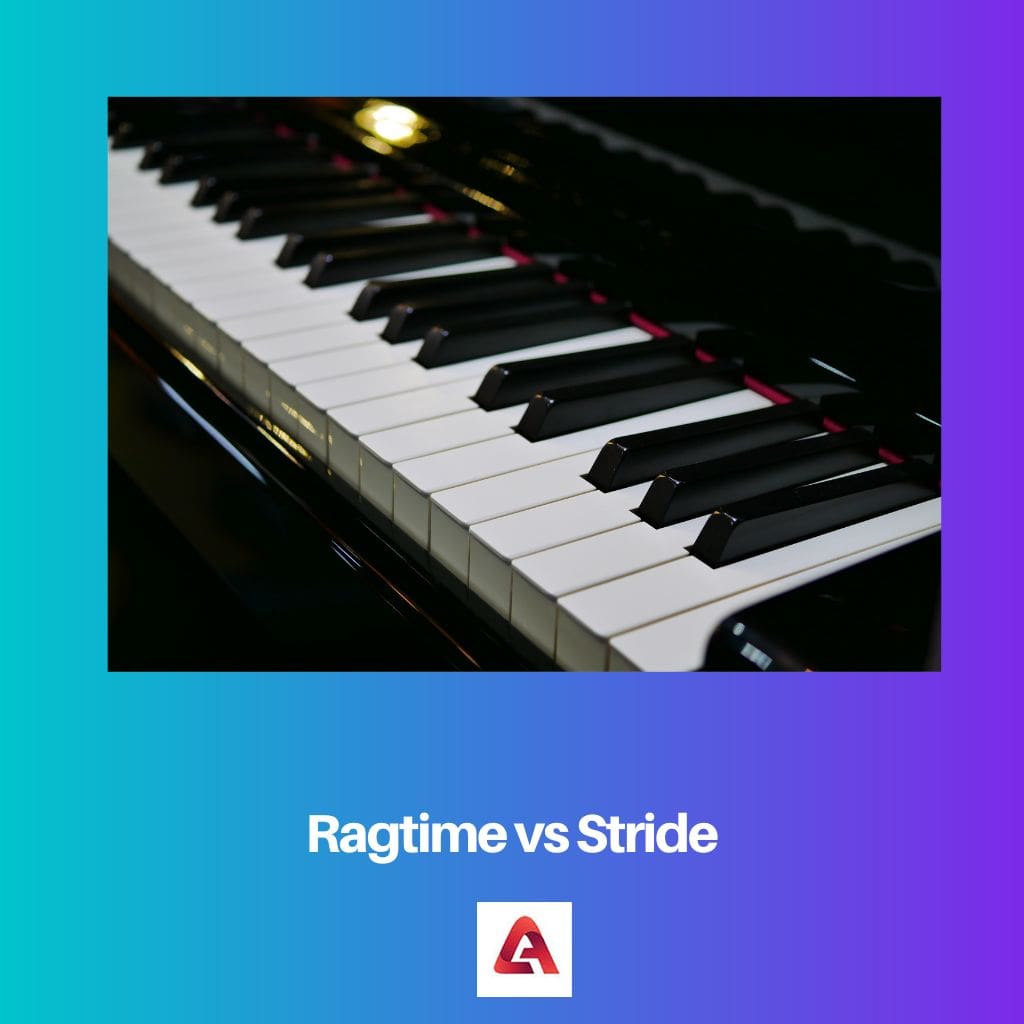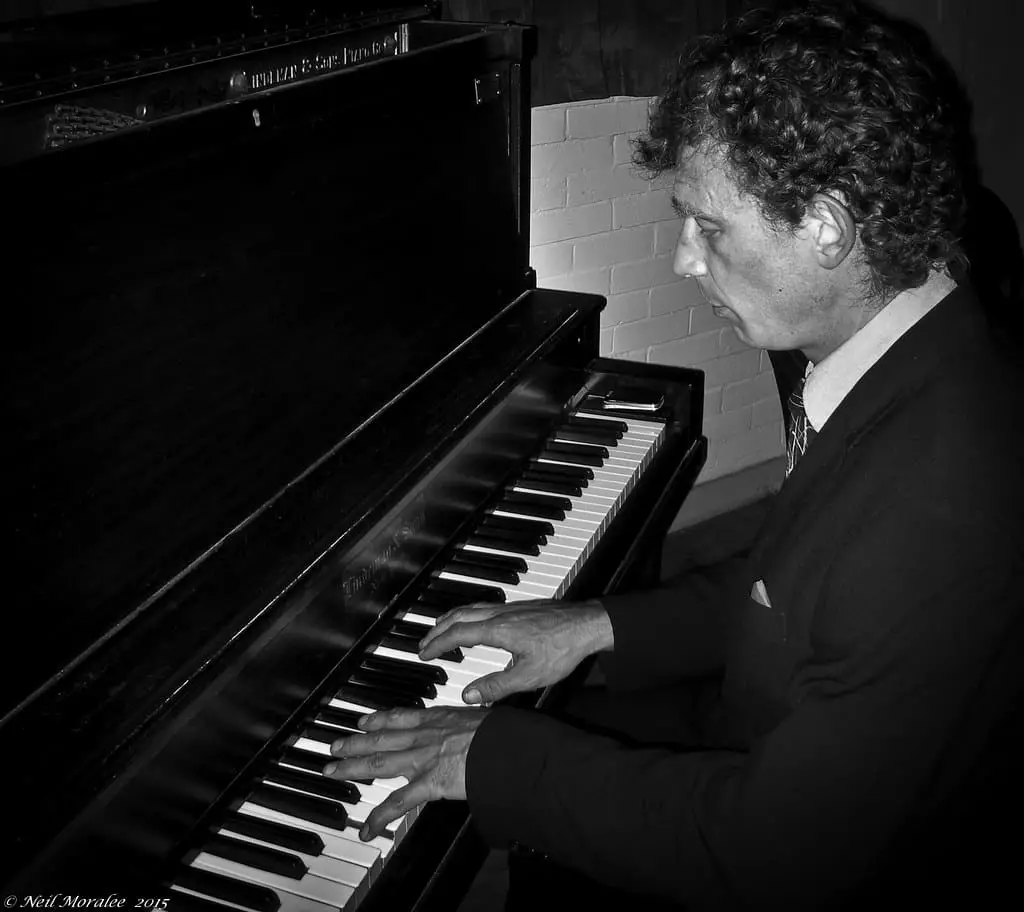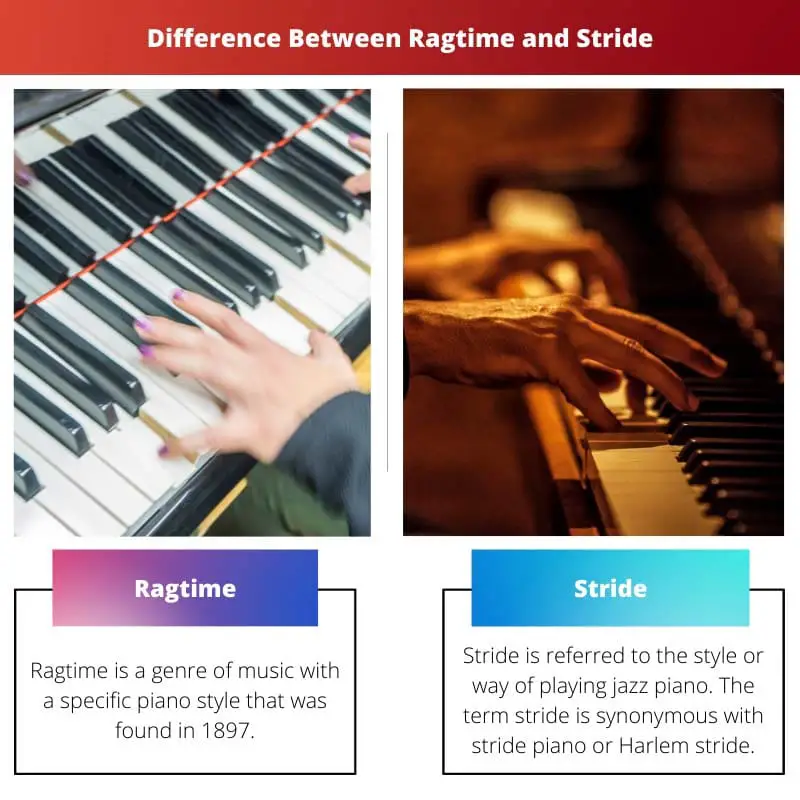The American piano styles are closely related and sound similar. The two common styles are Ragtime and Stride.
The styles have an active virtuosity and a steady baseline. But there are distinct differences in the features of both styles of piano playing.
Key Takeaways
- Ragtime is a musical genre characterized by syncopated rhythms, while Stride is a jazz piano style characterized by its left-hand “striding” basslines and right-hand melodic improvisation.
- Ragtime originated in the late 19th century and influenced the development of jazz, while Stride developed in the early 20th century as a successor to ragtime.
- Both genres have significantly impacted the development of jazz and popular music.
Ragtime vs Stride
Ragtime is one of the genres of music which uses a particular piano style, it was created in the year 1987 and originated in the Southern United States and the Midwestern. Stride is a particular style of playing the jazz piano, it was created in 1920, and it originated in America.

Ragtime comprises of “rags”. The composition is strict and inspired by marches. They are written down and played upon dictation. There are four main strains and 16 measures organized in different forms.
There is a short introduction before the first play. Ragtime does not allow any improvisation and solely follows the written music.
On the other hand, the stride is open-ended, and there is no strict composition to follow.
The pianists of stride can give their personality to the composition and do not restrict it to any specific sheet music. There have been numerous improvisations and embellishments in stride.
Comparison Table
| Parameters of Comparison | Ragtime | Stride |
|---|---|---|
| Origin period | 1897 to 1950s | 1920s to 1930s |
| Origin place | Originates in Midwestern and southern United States | Originated in East Coast cities, especially New York |
| Father of the culture | Scott Joplin | James P Johnson |
| Improvisation | Did not allow any improvisations or embellishments | Allowed more improvisations and embellishments |
| History | Ragtime was waned and waxed before the recording of music started | Stride was developed during the early revolution of recording technology |
What is Ragtime?
Ragtime is a genre of music with a specific piano style that was founded in 1897. The characteristic of the ragtime genre of music is that the rhythm sounds ragged. The music type was composed for the piano.
Ragtime was used as original music in dance music of American cities like Saint Louis or New Orleans red-light area.
The influencing factor of ragtime music was African music. John Philip Souza made ragtime popular by modifying the March music and making additions to polyrhythms.
The most popular composer of ragtime music was Scott Joplin. The most loved work of Scott Joplin is Maple Leaf rag which was published in the year 1899. It had become a big hit on the revived music.
Ragtime was also forgotten for some time but later revived in the late 1940s. Many people consider ragtime to be responsible for influencing the jazz genre of music. The belief is due to several jazz players who played ragtime during the 1940s.
The revolution of ragtime was seen in the 1950s when new rags were constantly being composed, recorded, and published. The revolution in the 1950s also brought about a change in the style of ragtime.
The rags of Scott Joplin brought revival in the 1970s to ragtime. This also won the record of Grammy Award for the genre of ragtime. Most people consider ragtime as the American classic.

What is Stride?
Stride is referred to the style or way of playing jazz piano. The term stride is synonymous with stride piano or Harlem stride. The striding movement of the left hand on the keyboard has inspired the term stride.
This style of playing the piano was common in East Coast cities, especially in New York, during the time 1920 to 1930s.
Stride was mainly developed in New York City. This style of playing jazz piano was mainly found in slow-tempo music.
Stride could be played with more speed once the player had reached an expertise level. This style of piano playing has arisen mainly from ragtime players.
Some prominent stride pianists are Mary Lou Williams, Willie “the Lion” Smith, Luckey Roberts, James P. Johnson, Fats Waller, and several others. This style of piano actively uses quick tempos and piano ranges.
The left-hand plays a four-beat pulse with a single bass note and major 7th or 10th on the interval of the third and the first beat and a constant chord of the 2nd and 4th beat.
The stride of the piano is highly rhythmic as it has alternate-based nodes and chord actions produced by the left hand. There is a subtle rhythmic tension that is quite close to the tempo which is established.
The “Father of Stride” is referred to as James P Johnson.

Main Differences Between Ragtime and Stride
- Ragtime consists of rags and is inspired by marches, while stride is open-ended and can be given different forms depending upon the personality.
- Ragtime was developed from 1897 to the 1950s, while stride was developed during the 1920s to 1930s.
- Cities like New Orleans and Saint Louis were the first to start ragtime, while New York was the first city to develop the stride style.
- Ragtime does not allow any embellishments in the written music, while stride allows embellishments in the written music.
- Scott Joplin is known as the “king of ragtime”, while James P Johnson is known as the “father of stride”.

- https://books.google.com/books?hl=en&lr=lang_en&id=oAI8CrQhM2cC&oi=fnd&pg=PP1&dq=ragtime+and+stride&ots=jW4yQXwsqt&sig=7eNi16Xw_UtfMvyvt-oZd9gL5FE
- https://ir.library.illinoisstate.edu/cgi/viewcontent.cgi?article=4103&context=somp

Thank you for the informative explanation of the distinct differences between Ragtime and Stride piano styles. It’s fascinating to learn about the history and influences behind these two music genres.
It’s interesting to note how Ragtime was forgotten for some time before making a revival, and the contribution of Scott Joplin to the genre, while Stride evolved directly from ragtime and presented a new form of jazz. Both have significantly impacted the music of their time.
The references to further reading materials at the end offer additional resources for expanding knowledge on Ragtime and Stride, contributing to the credibility of the information presented throughout the article. A valuable inclusion.
The detailed descriptions of what Ragtime and Stride are, along with their historical background, adds depth to understanding the evolution of jazz and popular music from these piano styles. An enlightening read.
The description of the rhythmic and stylistic characteristics of Ragtime and Stride piano, including notable artists associated with the genres, provides a well-rounded view of their impact on the music landscape. A comprehensive overview.
The distinguishing features of Ragtime’s structured composition versus Stride’s open-ended improvisation provide a clear understanding of the contrasting musical styles. The historical context and key differences are presented with clarity.
The comparison table clearly outlines the origin, improvisation, and history of Ragtime and Stride, highlighting their differences. Well researched information.
It’s intriguing to learn about the distinctive roles of Scott Joplin as the ‘king of ragtime’ and James P Johnson as the ‘father of stride’, solidifying their influence and lasting significance in the history of music. The legacy of these artists is worth exploring further.